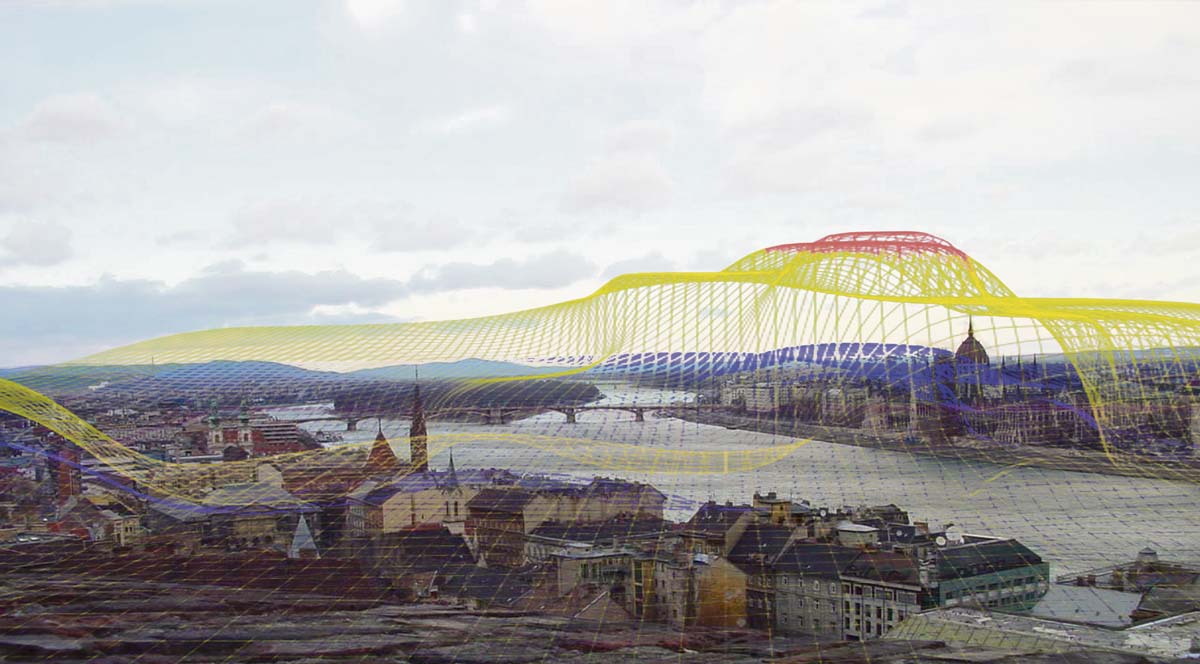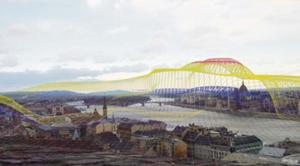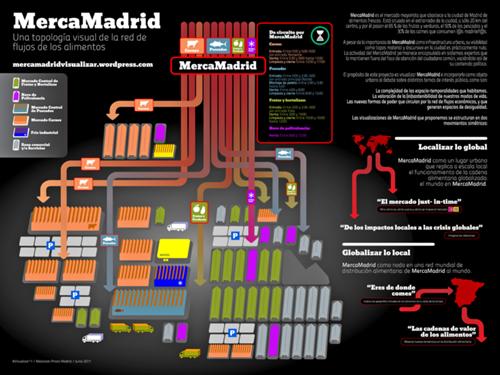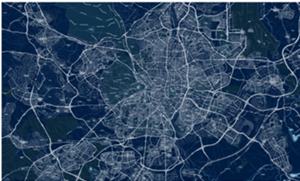OJO al DATA Exhibition. Data Culture, Economy and Politics

Lunes: 16:00h a 21:00h
Martes, Miércoles, Jueves y Viernes: 10:00h a 21:00h
Sábados de 11:00h a 21:00h
Free admission
About Ojo al DATA
Over the past ten years data has been one of the main working materials used at Medialab-Prado. Whether it is generated by government bodies, by digital and urban infrastructure or by communities of citizens or activists, data can be used as a tool to pose questions and build models of possible solutions to various conflicts. Since the Visualizar (Visualise) project began in 2007, the cultural, social and political repercussions of the mass data era have been the focus of numerous projects developed in workshops, hackathons and user community meetings.
Ojo al Data encompasses a range of projects originating from the past four editions of the Visualizar programme as well as from other activities (AVLAB, data journalism workshops). The projects use data as a language to explore and to encourage debate. All of them relate to the region of Madrid and use available datasets to examine various exploitable aspects of the city from different angles: from its bicycle mobility to its air quality and the operations of its central market.
The aim behind the Visualizar programme and other Medialab-Prado activities focusing on the data culture has always been to promote an open and participatory culture – which also remains critical and sceptical – in regard to the standard narrative of how digital technologies impact our lives. Rather than displaying completed, finished works, Ojo al Data showcases research forums that still deserve to be examined and are open to new sorts of questions.
Now Showcasing:
In the Air
Project by Nerea Calvillo

In the Air, a project launched in the Visualizar 2008 workshop, aims to call attention to something we can’t see but which is essential to the quality of city life: the air we breathe. Today’s cities have stations that measure pollution and monitor atmospheric levels of various substances. An interactive application explores the data collected by these stations in the city of Madrid over a period of one year, using 3D areas to represent the evolution of these substances in space and time. Using the original application developed in Visualizar 2008, the project has explored other communicative techniques, such as small sculptures comparing the air in various cities.
Projects such as In the Air provide a platform to raise individual and collective awareness, and can ultimately be used to make decisions of a town planning and political nature.
Collaborators in MADRID (I) Medialab-Prado: Sandra Fernández, Carlota Pascual, Gregg Smith, Guillermo Ramírez, Miguel Vidal Paco Ramírez, Raphaël de Staël Susanna Tesconi, Vítor Viña / Collaborators in SANTIAGO DE CHILE 09 Bienal de Video y Artes Mediales Katha Caceres, Francisco Calvo, Christian Oyarzun / Collaborators in MADRID (II) Medialab-Prado: Paolo Battino, Marina Fernández, Martín Nadal, Raquel Osa, Guillermo San Miguel / Collaborators in BUDAPEST Kitchen Budapest: András Beke, Áron Benedek, Dávid Dul, Irma Földényi, Olivér Horváth, Márton András, Szonja Kádár, Tamás Nadrai, Levente Polyák, Zsófia Ruttkay / Collaborators in GIJÓN Laboral Centro de Arte y Creación Industrial: Marina Fernández, Martín Nadal, Pablo Guadalupe,Kike de la Rubia. The production of some of the material exhibited was made possible by Laboral Centro de Arte y Creación Industrial.
The Data Citizen Driven City / Air Quality Egg
Project by César García Sáez and Sara Alvarellos

The Open Data movement promotes open access to data generated by government bodies, but sometimes open access is not enough. In view of this, some communities prefer to create mechanisms enabling citizens to generate data themselves, in order to supplement or call into question the data available through official channels.
In the words of architect and artist Usman Haque, the Participatory Sensing movement and Citizen Science call for a shift “from making data public to the public making data”. The Air Quality Egg is an open hardware platform enabling installation of a pollution measuring station in one’s own home, as well as participation in an online community of citizens concerned over the quality of the air they breathe. “Citizen data infrastructure”, i.e. systems managed by a city’s residents to give a better picture of its status, will doubtless play a role in the future of our large cities.
Individuals in the community whose involvement is particularly noteworthy: Jorge Paz, Félix Pedrera, Javier Montaner, Gabriel Herrero-Beaumont, Juan Félix Mateos, Gabriel Lucas, Julio Galarón, Chema Blanco.
MercaMadrid: A visual topology of the food flow network
Project by César García Sáez and Montserrat Cañedo

Our daily lives depend on the smooth operation of systems and infrastructure that we rarely stop to think about. Everything from the water that pours from our taps to the reception of our mobile phones is the product of a series of systems that comprise industries, distribution chains and technologies that normally go unnoticed. The goal of the Visualizar 2011 workshop “Comprender las Infraestructuras” (Understand Infrastructure) was to open up the ‘black boxes’ of the city and the integrated systems in which every day decisions are made that affect our lives.
The central market in any city is the port of entry for perishable food and one of the pillars around which community life revolves. MercaMadrid, located just 20 km from the city centre, is the market that supplies Madrid with its fresh food. 65% of the fruits and vegetables, 50% of the fish and 30% of the meat consumed by the city’s residents passes through MercaMadrid. Despite its importance as part of the city’s infrastructure, its visibility as a physical, discursive space in the city is negligible. “Mercamadrid: A visual topology of the food flow network” aims to familiarise the public with how the market operates through analysis of available data and generation of explanatory visualisation.
Collaborators: Víctor Díaz Barrales, María Olmeda Franco, Ester Gisbert Alemany (AKA estersensehac), Javi Esquillor García, Fabio Silli, Beatríz García, David Rodríguez (AKA Tina Paterson), Sara Alvarellos, Martina Minnucci, Carlos Panero Zurbriggen, Gorka Cortázar.
Cascade on Wheels
Project by Steph Thirion

Cascade on Wheels is a visualisation of the volume of vehicular traffic on modern urban roads. It was developed using the average number of vehicles circulating per day on each of the streets in a given section of the centre of Madrid in 2006. Averages were taken for four different types of vehicles: cars, taxis, lorries and buses.
This data was used to produce two visualisations, each based on a different metaphor. In the first, “Walls Map”, the flow of traffic is represented by 3D vertical columns that rise up from the different streets as if they were walls. The higher the columns climb, the denser the traffic is. The second data visualisation, “Traffic Mixer”, uses sound as a metaphor. Differing intensities represent the different volumes of traffic on each street. The first visualisation is intended to be more explanatory, while the second encourages viewers to explore the data in an entertaining fashion.
Collaborators: Cristóbal Castilla, José Hernández, Ricard Marxer, Julian Oliver.
Crowdcrafting.org
Lead developer: Daniel Lombraña González

Crowdcrafting is an online platform that can be used by professional and amateur scientists to create their own science projects with the aid of citizens from all over the world who help solve problems, collect data and perform complex tasks requiring human intelligence which cannot be fully automated. It’s a completely open source platform in line with the Open Science movement, which makes research procedures and results available to all interested parties.
Crowdcrafting is a tool that facilitates and furthers the dissemination of Citizen Science, a movement that promotes active contribution to the production of scientific knowledge by members of society who are not professional scientists. Citizen Science project volunteers help increase the value of a given investigation, while increasing their own understanding of the scientific method.
Affiliations: Co-Founder and Project Lead of Crowdcrafting and PyBossa, SciFabric
Avis Data
Project by Kepa Landa (2006-08)

In most cases the code we use to represent a dataset is visual, as sight is one of the senses that is most easily used to enhance our cognitive skills. Most visualisation projects use graphic language, but this is not necessarily the only or even the most appropriate method. “Sonification” is the translation of data into sound, and the technique has special significance in projects such as “Avis Data”, which was developed in the AVLAB 1.0 workshop in 2008.
The project explores air quality, an issue that is often addressed by urban data analysis projects, but it uses a surprising vehicle to do so: the sound of birds chirping in a city square. The system uses the air quality measurement data posted by the City Council of Madrid on its webpage, and translates it into the sound of birds singing. When air quality conditions are optimal the sound heard is identical to that of a real bird. When substances climb above desirable limits, however, the quality of the singing, for instance the tone, is modified in the same proportion as the excess substance. Just listening carefully to a daily scene thus enables us to perceive the changes taking place in something we can’t see but which constantly surrounds us: the air.
This project is based on two ideas: "cyberception" and bioindicators. The idea of "cyberception" (perception enhanced by sensor systems), a term coined by Roy Ascott, is that we can enhance the way we perceive our world. We also aimed to create a metaphor using bioindicators, which are what scientists call the animals or plants they study to give them a picture of the health of an ecosystem, due to the fact that the behaviour of these organisms changes in reaction to non-natural changes in their ecosystems.
Collaborators: programming: Oscar Martín (Pure Data), Pablo Ripollés (Python/Pandas), Steven Pickles and José Carlos Cortizo. Acknowledgements: Medialab-Prado, Centro de Arte Contemporáneo Huarte (which supported this project with a Creative Grant in 2008), Francisco López, Hans Christoph Steiner, Lino García Morales, Francisco Moya (Madrid City Council Air Quality System), María Jesús de Pablos, Roberto Canduela.
Collaborative mapping
Project by Alejandro Zappala, Geoinquietos Madrid

In addition to citizen science, another fundamental movement that is promoting an open data culture, in which data can be accessed by every member of society, is a movement that calls for the creation of “pro-Commons data”, i.e. sets of rich and usable data unrestricted by intellectual or industrial property rights, which any user can employ to build a project. The most successful example of such pro-Commons data is OpenStreetMap, the famous initiative offering high-quality maps and geographical data created through the disinterested involvement of communities that have mapped their cities. In Madrid, the group Geoinquietos has conducted numerous collaborative mapping initiatives in partnership with Medialab-Prado, in order to map out our city.
#madridenbici
Project by Antonio Delgado

As a city, Madrid turned its back on cycling for decades. In recent years the use of bicycles has grown and the use of other modes of transport has fallen. Even so, in 2012 just 0.1% of all trips were made by bike, according to average daily traffic data.
In the view of Madrid’s citizens, the main disadvantage of bicycles as a mode of transport in the city is that they are perceived as risky and dangerous, according to an analysis conducted by the Madrid City Council Cyclist Mobility Master Plan.
#MadridEnBici is an independent data journalism project that uses data to represent the actual usage of bicycles in Madrid. The project does not aim to provide a stationary snapshot. Rather, it is continually being developed and updated. It welcomes the collaboration of associations, organisations, companies and citizens interested in improving knowledge of the use of bicycles.
Casas Tristes
Project by Derivart, Gerald Kogler, Jordi Puig

Casastristes.org is a platform for reflection on Spain’s housing problems which is open to citizen participation. The project is built around the detection and location of unused properties, and it was launched to further debate on housing in Spain, striving to identify some of the causes of housing problems and evaluate their effects. Its original aim was the creation of a public database of empty homes in Spain.
To this end, Casastristes.org has created a set of data visualisations providing a graphic, accessible representation that clarifies various economic and social issues relating to the problem of access to housing in Spain. These visualisations are designed to provide information on and disseminate ambiguous concepts, but they are also tools that can be freely used by associations, groups and citizens to find information, communicate with each other and broadcast complaints and suggestions.
Collaborators: Marcel F, Coco Moya, Carla Capeto, Hilario Álvarez, Yolanda Spinola, Jordi Baldo, Fran Castillo, Jesús Rodríguez, Daniel Beunza, Abraham Manzanares, Roger Guillamet, Pablo Miranda, Paola R. Salillas.
Main sponsor:


Other sponsors:

Technology partner:




 Medialab-Matadero Madrid
Medialab-Matadero Madrid
